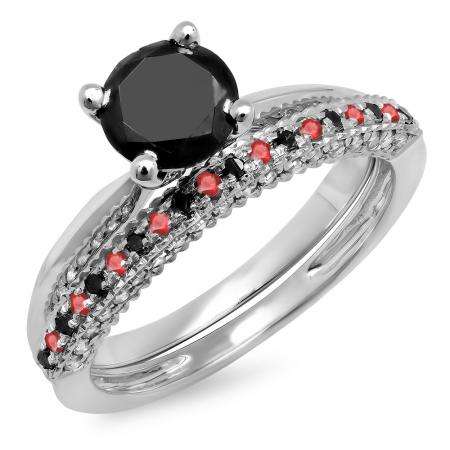A loose diamond purchase in Frisco may be complex, particularly when you’re dealing with issues like assessing a diamond’s clarity. If you don’t know what to look for, don’t understand the various clarity grades, or if you simply want an expert to walk you through the process, a gemologist that understands diamond charity charts in Frisco can help you.
What is Diamond Clarity?
The clarity in diamonds relates to the stone’s rarity and purity, and the extent to which it displays imperfections and inclusions. Gemologists utilize 10x magnification and a qualitative grading method to give a clarity grade to each diamond based on its internal and external properties.
The higher the clarity grade, the fewer blemishes there are in a diamond’s visual appearance. Please remember that no diamond is completely pure when evaluating the ideal clarity for a diamond. In fact, the closer you go to purity, the more clarity you’ll acquire. Inclusion-free diamonds are very uncommon and highly sought-after.
Despite the fact that a diamond’s clarity has a substantial impact on its value, most flaws are not apparent to the unaided eye.
What is the GIA’s Clarity Scale?
- Flawless (FL), Internally Flawless (IF)
In comparison, Flawless is the finest clarity of a diamond because it has no inclusions or blemishes under 10x magnification, which is impossible to see in IF diamonds.
IF diamonds, on the other hand, may comprise external characteristics also recognized as blemishes that are exceptionally hard to see at 10x magnification, if at all.
- Very Very Slightly Included (VVS1, VVS2)
In spite of the name being redundant, VVS1 and VVS2 diamonds are given this grade because they actually include imperfections that are so minute that skilled gemologists employ 10x magnification to verify a stone’s clarity, unlike its Flawless or Internally Flawless counterparts.
- Very Slightly Included (VS1, VS2)
With 10x magnification, the inclusions in VS1 and VS2 diamonds are just a little difficult to see, but the inclusions in VS1 and VS2 diamonds are exceedingly tough to spot.
- Slightly Included (SI1, SI2, SI3)
Without the need for a 10x loupe, it is possible to see a cloud, knot, crystal, cavity, and feather inclusions in Slightly Included diamonds (SI1, SI2, SI3). Without magnification, the inclusions in a diamond are what indicate whether it is a Slightly Included or a Fully Included diamond.
- Included (I1, I2, I3)
Included (I1, I2, I3) diamonds that are rated as Included (I1, I2, I3) have prominent inclusions that can generally be detected with the naked eye and much more with 10x magnification.

How are Clarity Grades Determined?
Diamond clarity charts are used by grading organizations like the Gemological Institute of America (GIA) and the American Gem Society (AGS) to assign each diamond a specific clarity grade depending on its look. The GIA Clarity Scale includes VS (very slightly included) and SI (very slightly included) as the most common grades.
The GIA system examines the size, nature, number, location, color or relief, and quantity of clarity features that may be seen under 10x magnification when calculating a clarity grade. The only way to accurately grade a diamond’s clarity is to use a “loose” diamond.
1. Size
The magnitude of a clarity characteristic is used as a starting point for evaluating its clarity. The higher the magnification, the more obvious the larger features become. This results in a poorer clarity rating for the stone.
2. Number
Second, the number of distinct features of clarity is counted. A higher clarity grade is associated with fewer features. These attributes are evaluated based on their visibility, rather than the actual quantity of traits.
3. Position
The location of a feature is taken into consideration while determining the degree of clarity. The inclusion is most noticeable when it is right beneath the diamond’s table. The term “reflector” refers to a stone addition that is positioned near a pavilion facet and reflects many times around the stone.
4. Nature
Fourth, the nature of a trait is evaluated. The nature of the feature decides whether it is internal or external. For this reason, a diamond cannot be considered Flawless or Internally Flawless. In order to qualify as a flawless diamond, a diamond must have no flaws on the outside.
5. Color or Relief
For the fifth component, color, and relief are taken into consideration. “Relief” refers to characteristics that stand out from the surrounding diamond’s color tone the most. The clarity grade of a diamond is influenced by the amount of color and relief that can be seen.
What Are the Common Mistakes Made With Diamond Clarity in Frisco?
If you’re looking to make a “good investment” in diamonds, don’t purchase one with a clarity grade that’s just too high to appreciate.
Excessive spending on a feature that seems excellent on paper, but has little influence on the diamond’s beauty in real life, is the outcome of this.
If you’re looking for a diamond with a VVS1 clarity grade, for example, you won’t see many of the inclusions that create the difference between an FL or IF rating and a VVS1 grade.
By concentrating on the clarity grade rather than its look, you will wind up wasting money that might have been used to buy a bigger diamond.
Diamonds with a greater degree of clarity are thought to be more uncommon in nature, which makes it a significant factor in determining a diamond’s value. You can be sure that the loose diamonds you are purchasing have the right clarity grade when you buy from reputable diamond stores that sell GIA diamonds in Frisco.
Shira Diamonds – Frisco
Address: Frisco, Texas
Contact: +1469-827-9042



